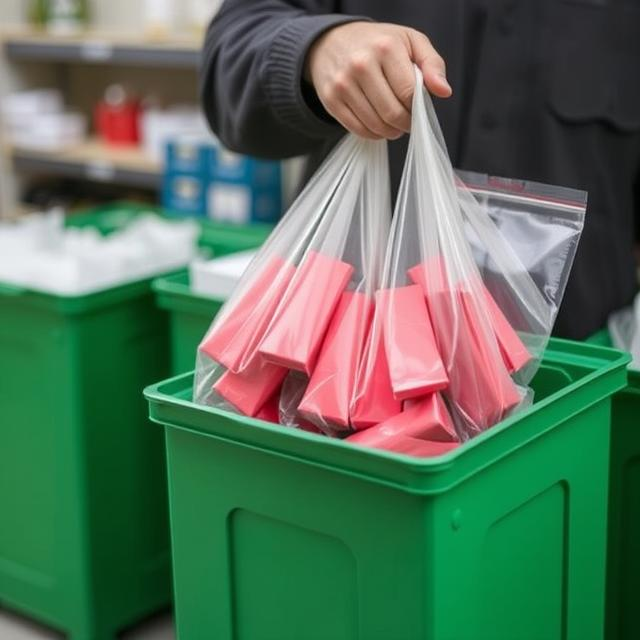
The bag-in-bag-out system is a safe and effective way to dispose of hazardous waste. It’s a closed system, which means there’s no risk of exposure to the outside environment. The system uses two bags: one inside the other. When the inner bag is full, it’s sealed and removed from the outer bag. The outer bag remains intact, protecting the waste from leaking or spilling.
In this article, we’ll discuss how the bag-in-bag-out system works and its benefits for OEB protection. We’ll also provide some tips on how to choose the right system for your needs.
What is an OEB?What is a Bag-in-Bag-Out System?How does a Bag-in-Bag-Out System work?Benefits of a Bag-in-Bag-Out System for OEB protectionConclusion
What is an OEB?
OEBs, or occupational exposure bands, are a way to classify the potential risks of exposure to different substances in the workplace. They are used to help employers assess the risk of exposure to different substances and to take appropriate measures to protect workers.
OEBs are classified into four bands, with each band representing a different level of risk. Band 1 represents the lowest level of risk, while Band 4 represents the highest. The classification is based on the potency of the substance, the route of exposure, and the duration of exposure.
It is important to note that OEBs are not a substitute for proper risk assessment and management. They are simply a tool to help employers identify and manage the risks associated with exposure to different substances.
OEB 1: Low risk
OEB 1 substances are considered to have a low risk of causing harm to workers. These substances are typically not very potent and are unlikely to cause harm even with prolonged exposure. Examples of OEB 1 substances include some cleaning products, such as vinegar and baking soda.
OEB 2: Moderate risk
OEB 2 substances are considered to have a moderate risk of causing harm to workers. These substances are typically more potent than OEB 1 substances and may cause harm with prolonged exposure. Examples of OEB 2 substances include some pesticides and herbicides, such as glyphosate and 2,4-D.
OEB 3: High risk
OEB 3 substances are considered to have a high risk of causing harm to workers. These substances are typically very potent and can cause harm even with short exposure. Examples of OEB 3 substances include some chemicals used in the manufacture of pharmaceuticals, such as penicillin and cyclosporine.
OEB 4: Very high risk
OEB 4 substances are considered to have a very high risk of causing harm to workers. These substances are typically extremely potent and can cause harm even with very short exposure. Examples of OEB 4 substances include some chemicals used in the manufacture of pharmaceuticals, such as chemotherapy drugs and antiviral medications.
What is a Bag-in-Bag-Out System?
The bag-in-bag-out system (BIBO) is a closed system used for the containment and disposal of hazardous waste. The system consists of two bags, one inside the other, with a sealing mechanism that allows the inner bag to be removed and disposed of without exposing the waste to the outside environment.
The BIBO system is commonly used in laboratories and pharmaceutical manufacturing facilities to protect workers from exposure to potent compounds and to prevent contamination of the environment.
The BIBO system is an effective way to protect workers from exposure to hazardous waste. The system is designed to be used in conjunction with other safety measures, such as personal protective equipment (PPE) and ventilation systems.
How does a Bag-in-Bag-Out System work?
The BIBO system consists of two bags, one inside the other. The inner bag is used to collect the hazardous waste, while the outer bag provides an extra layer of protection. The system is designed to be used with a sealing mechanism that allows the inner bag to be removed and disposed of without exposing the waste to the outside environment.
The BIBO system is used in conjunction with other safety measures, such as personal protective equipment (PPE) and ventilation systems. The system is designed to be used in a controlled environment, such as a laboratory or pharmaceutical manufacturing facility.
The BIBO system is an effective way to protect workers from exposure to hazardous waste. The system is designed to be used in conjunction with other safety measures, such as personal protective equipment (PPE) and ventilation systems.
Benefits of a Bag-in-Bag-Out System for OEB protection
The BIBO system has several benefits for OEB protection:
1. Increased safety
The BIBO system provides an extra layer of protection for workers by preventing exposure to hazardous waste. The system is designed to be used in conjunction with other safety measures, such as personal protective equipment (PPE) and ventilation systems.
2. Reduced risk of contamination
The BIBO system prevents contamination of the environment by containing the hazardous waste. The system is designed to be used in a controlled environment, such as a laboratory or pharmaceutical manufacturing facility.
3. Improved efficiency
The BIBO system improves efficiency by reducing the amount of time workers spend handling hazardous waste. The system is designed to be used in conjunction with other safety measures, such as personal protective equipment (PPE) and ventilation systems.
4. Cost-effective
The BIBO system is a cost-effective way to dispose of hazardous waste. The system is designed to be used in conjunction with other safety measures, such as personal protective equipment (PPE) and ventilation systems.
Conclusion
The bag-in-bag-out system is a safe and effective way to dispose of hazardous waste. It’s a closed system, which means there’s no risk of exposure to the outside environment. The system uses two bags: one inside the other. When the inner bag is full, it’s sealed and removed from the outer bag. The outer bag remains intact, protecting the waste from leaking or spilling.
In this article, we’ve discussed how the bag-in-bag-out system works and its benefits for OEB protection. We’ve also provided some tips on how to choose the right system for your needs.









